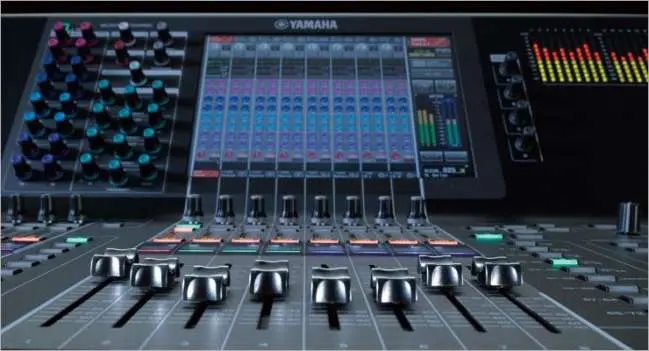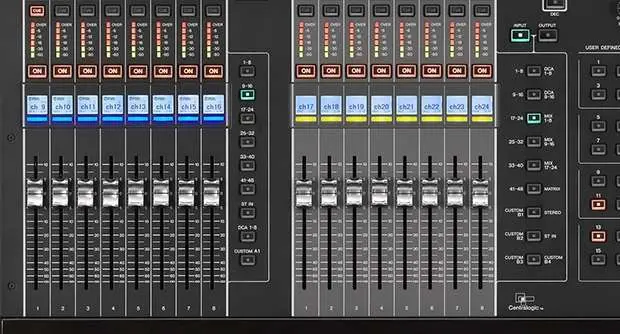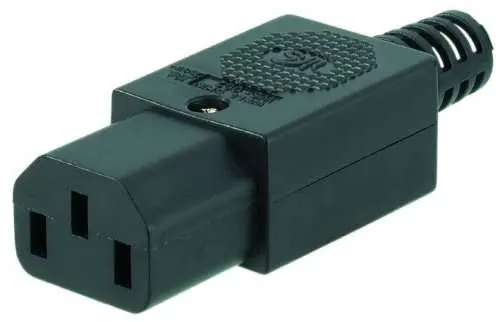
VCA, DCA and subgroups in a few words
See Mixers and powermixers at Muzyczny.pl
Probably every emerging sound engineer has encountered – or will soon meet – concepts such as VCA, DCA and subgroups. Many people have heard about these solutions, but are not entirely sure how to use them in practice and formulate their definition. However, it is worth knowing what these tools are for, because they contribute to a significant facilitation of work, whether in the studio – or live, during a concert – where they are used most often.

So what are they and what are they for?
VCA is short for Voltage Controlled Amplifier – in translation it is presented as “voltage controlled amplifier”. Simply put, when the audio signal goes to the console channel, at some point it encounters an electronic VCA circuit that can control its volume. Exactly – “maybe” – because we have to decide whether we want to change its signal remotely by assigning the channel to one of the VCA faders.
… okay – but isn’t it easier to send audio to one fader and use it to control the volume of selected channels?
What you just read is the definition subgroups – that is, sending the sound of selected channels through one slider. The VCA does not send any signal (audio) to the controlling potentiometer! Its task is to send information to VCA circuits in selected channels that we want to change their volume. Then, when changing the position of the VCA slider, we relatively change the volume of the assigned channels – let’s assume that we have five channels in a group. Keeping their position, we put our fingers on them and relatively decrease / increase their volume.

In addition, in the mixers we find another abbreviation similar to VCA … DCA
Digital-controlled amplifier works on the same principle as VCA – it allows you to remotely change the volume of selected channels, but in this case not with a separate electronic system, but digitally – inside the console DSP.
So are there any advantages or disadvantages of using particular solutions? Subgroups They are great for creating a common mix of multiple channels and then sending it to a Sum, Effects or Effects track, or other processors, for example. VCA and DCA they will pass the test during volume changes, in which we need the most natural behavior of the attenuators – when each of them is individually adjustable – which will definitely create a better effect in effect mailings.
Worth knowing … … these solutions, consciously use the functions of the console, the software, because each of them works in a different way and allows you to obtain different results – which will ultimately allow you to gain even better control over the sound.





